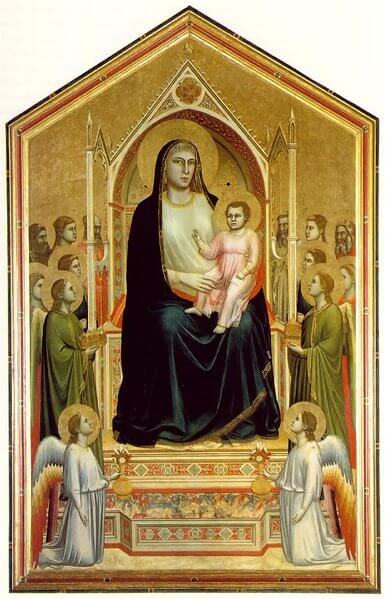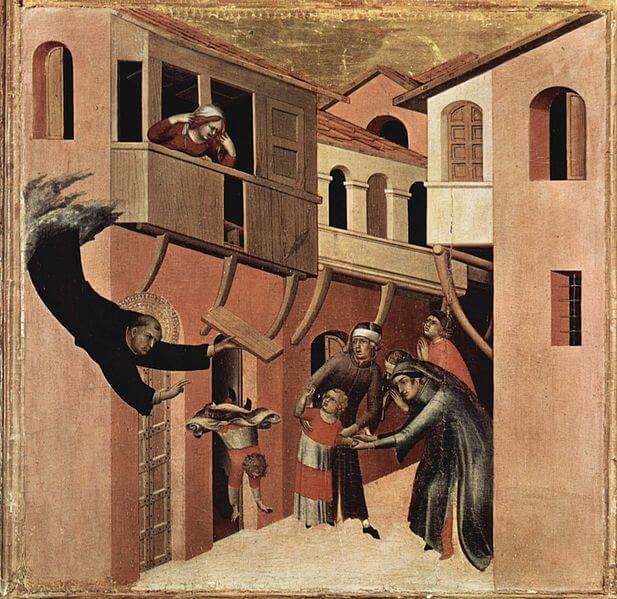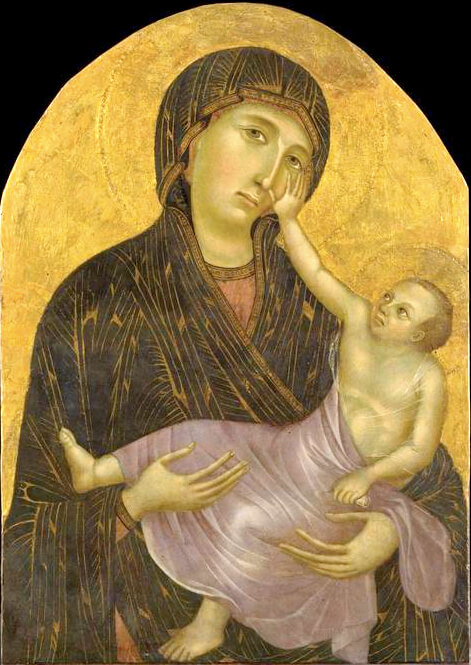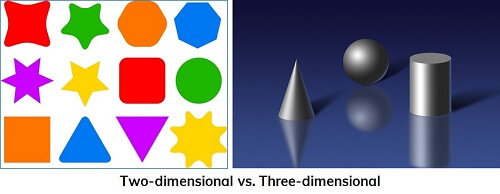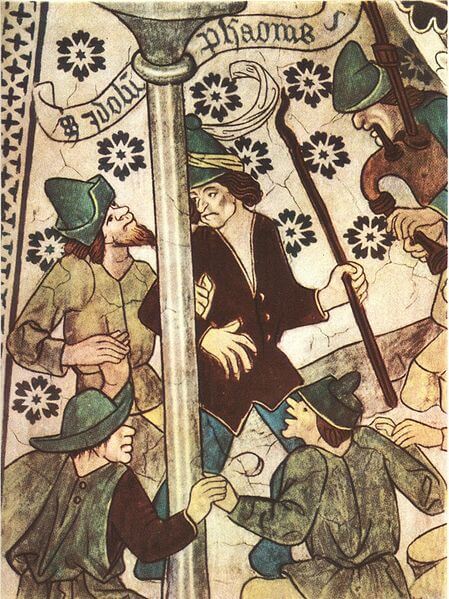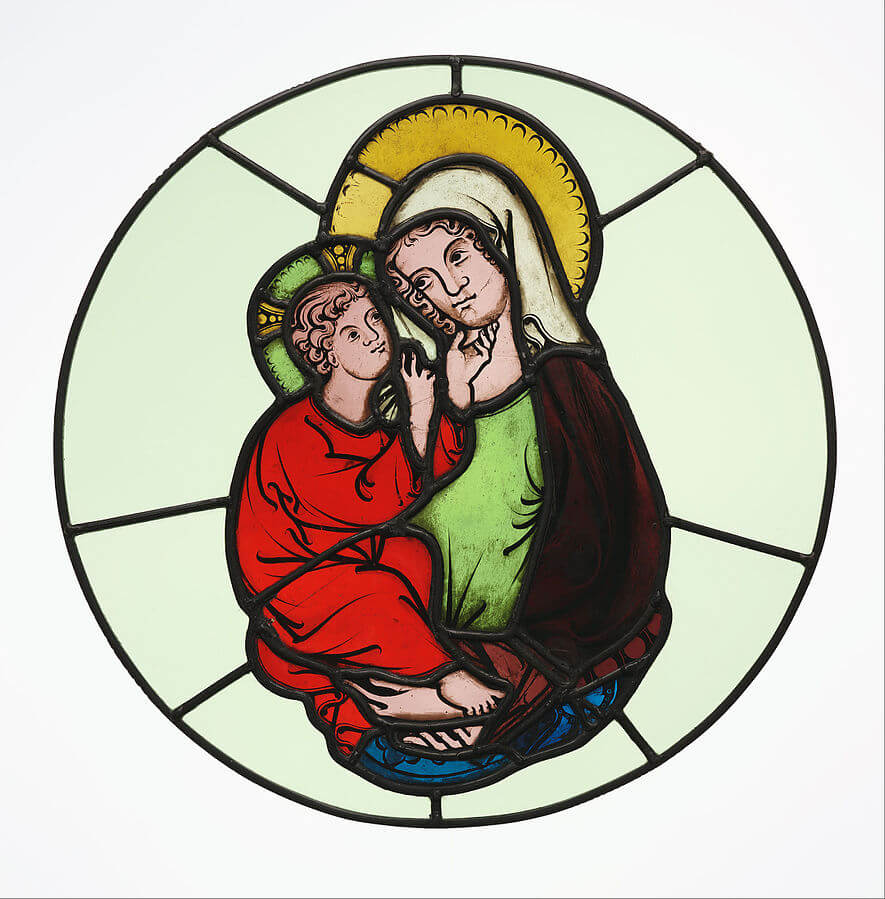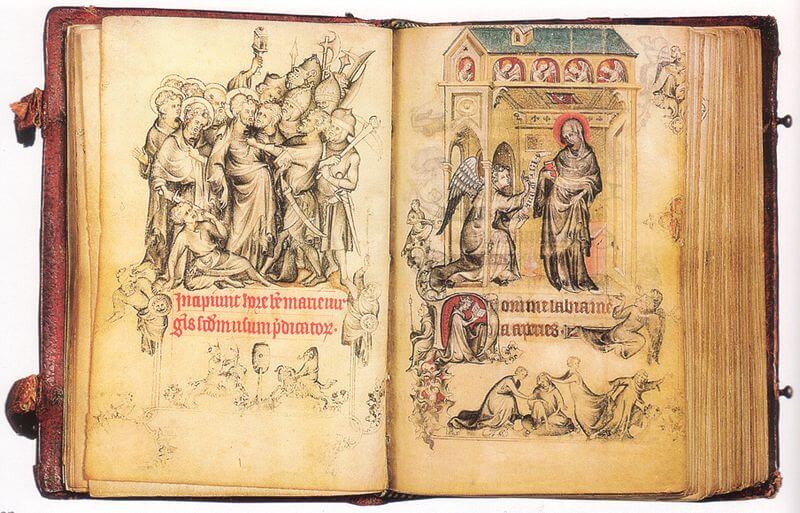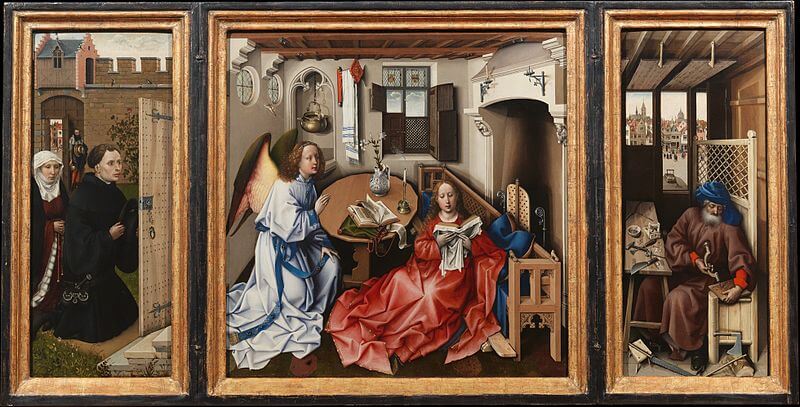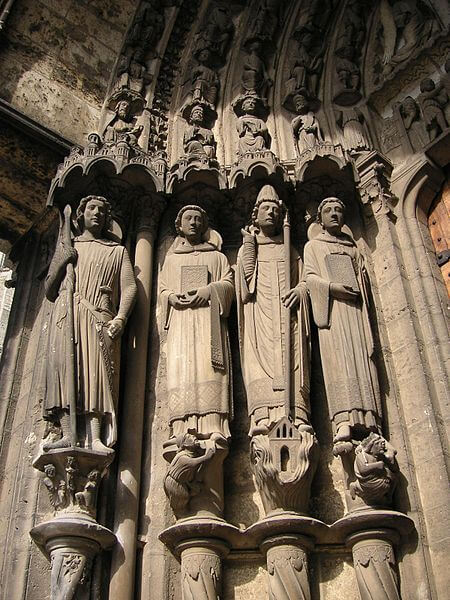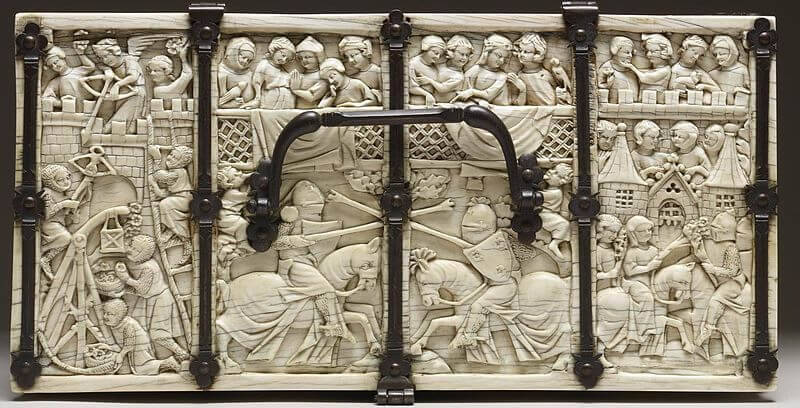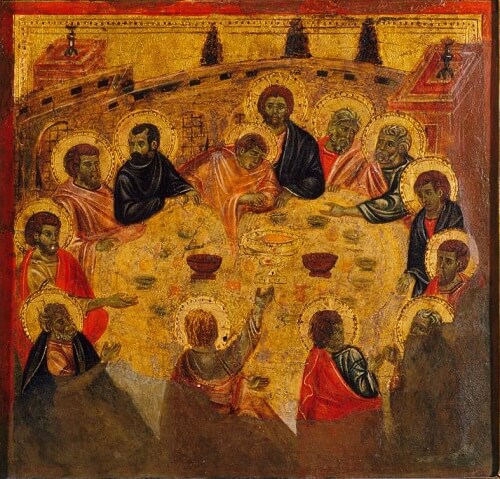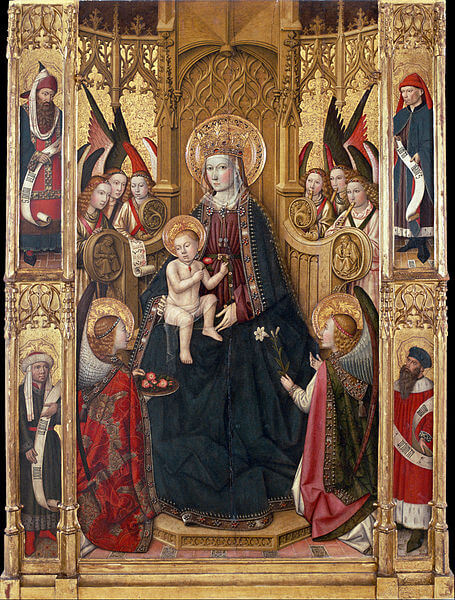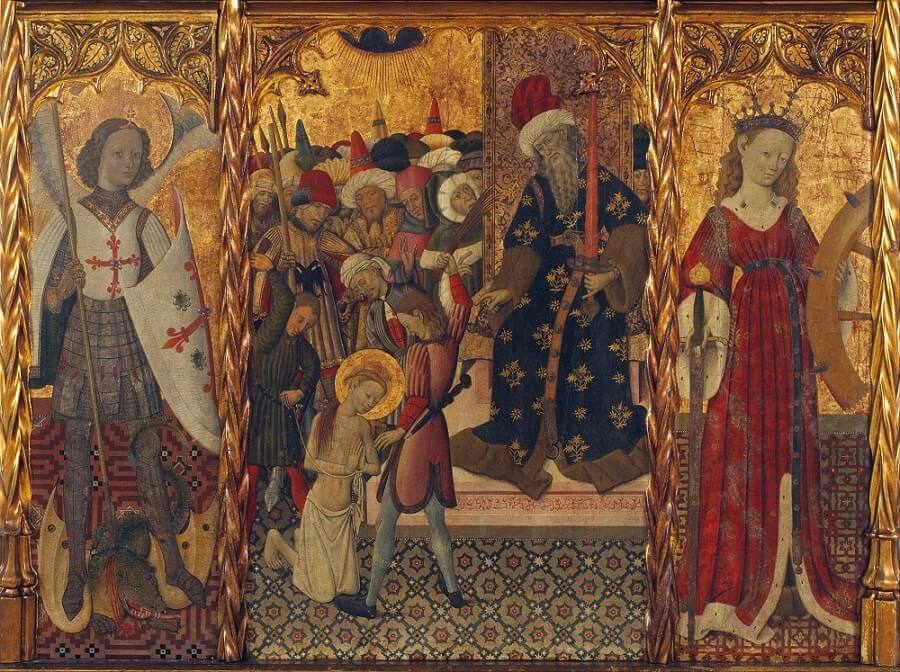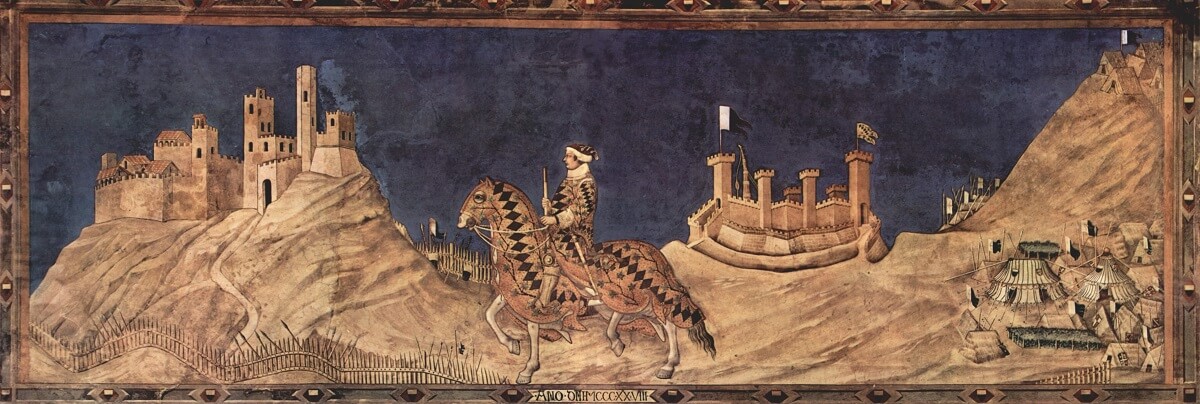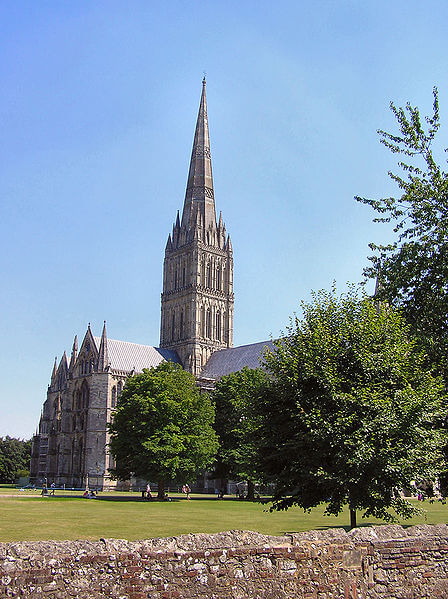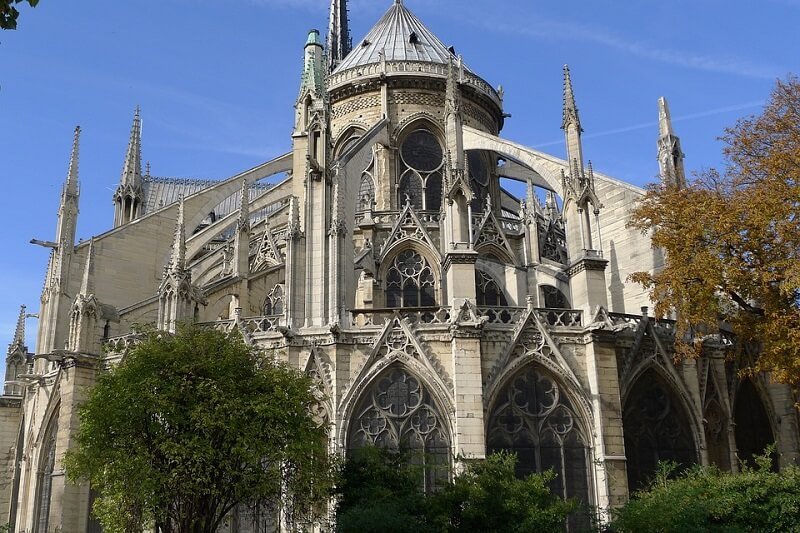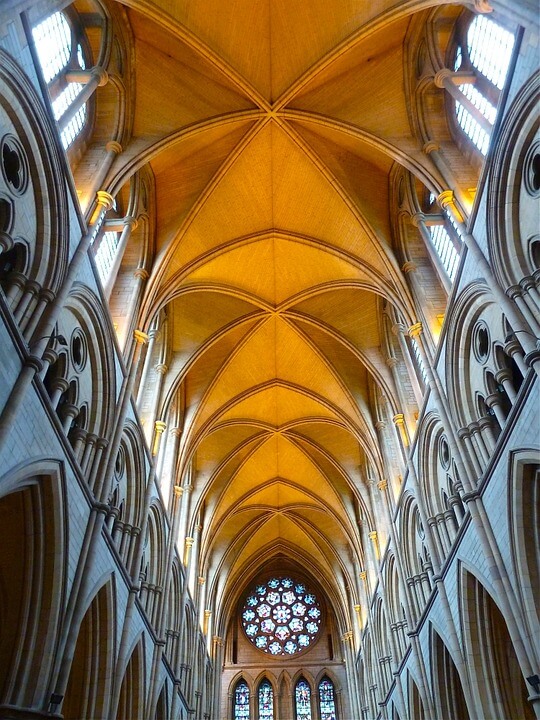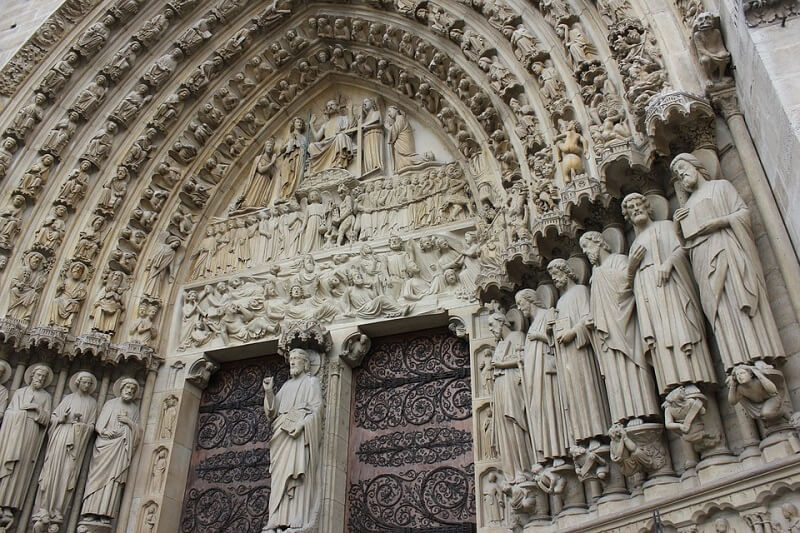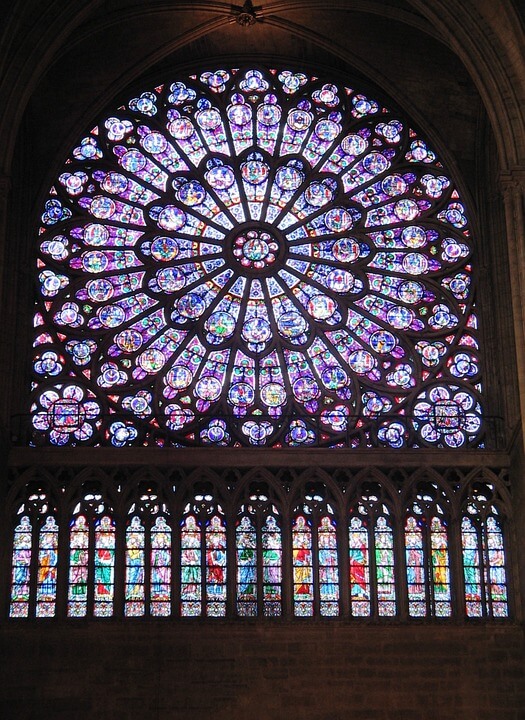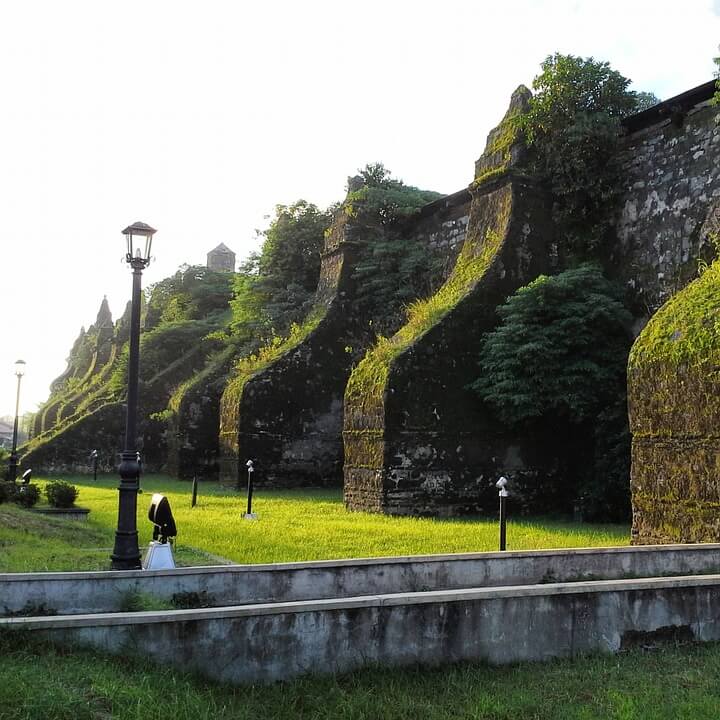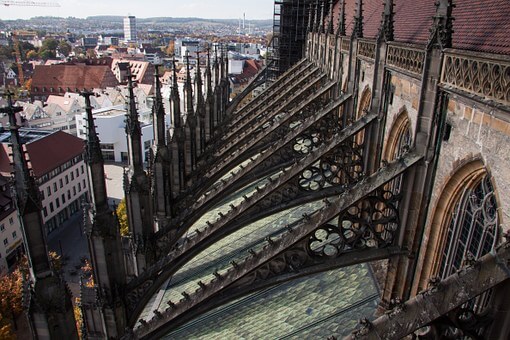Activity 1: Can You Find It?
Find the following in the artwork:
- Madonna
- Baby Jesus
- The Virgin Mary
- Two Haloes
- A Patterned Robe
- Something Tender
- Something Three-Dimensional
Activity 2: Narrate the Artwork
- After studying the artwork, narrate the scene shown aloud using your own words.
Activity 3: Read Dante's Words on Cimabue [2]
- Cimabue was outshined by an artist named Giotto. (You'll learn about Giotto in the next lesson.)
- The famous Italian poet Dante wrote of Cimabue's fall from popularity in Canto XI of Purgatorio.
- Recite aloud Dante's words.
- O vanity of human powers,
- how briefly lasts the crowning green of glory,
- unless an age of darkness follows!
- In painting Cimabue thought he held the field
- but now it's Giotto has the cry,
- so that the other's fame is dimmed.
- Study Dante's portrait below, painted by Sandro Botticelli in 1495.
Activity 4: Compare and Contrast Buttresses and Flying Buttresses
Buttresses are brick or stone structures built against another structure to support it.
- See below the stone buttresses helping to hold the wall upright.
- Note how the buttresses are completely solid and perpendicular to the wall they support.
Flying buttresses stand apart from the structures they support and are connected to the supported structures by an arch (flyer).
- Note how the flying buttresses connect to the supported structure with a perpendicular arch.
- Architects moved from solid, squat, traditional buttresses to flying buttresses to make buildings look more delicate and heavenly.
Activity 5: Classify the Artwork
- This artwork belongs to the Gothic art movement.
- Find the Gothic art movement on the timeline.
- During which (estimated) years did the Gothic art movement flourish?
- Which art movement preceded the Gothic art movement?
- Which art movement followed the Gothic art movement?
Activity 6: Recreate the Artwork

- Click the crayon above and complete page 8 of 'Fourth Grade Art History Coloring Book.'
